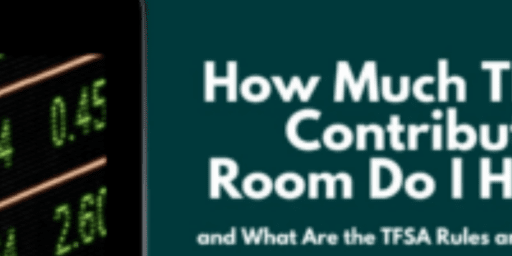Smith Manoeuvre/Dividend Portfolio Update – July 2013
For those of you just joining us, listed below is my portfolio that is leveraged with money borrowed from my home equity line of credit (HELOC). As the money borrowed is used to invest, the interest charged is tax deductible. I write an update every so often to show new positions added along with any market gains/losses. For more details on the strategy and procedure, check out my modified smith manoeuvre strategy and my comparison of online stock brokers.
It has been about five months since the last update (February 2013) with a bit of activity in the leveraged portfolio. I added to a a number of existing positions along with initiating four new positions.
I added to existing positions:
- Enbridge (ENB), Mullen Group (MTL), Calfrac Well Services (CFW), Finning International (FTT) and Bird Construction (BDT).
New positions were initiated with:
- Imperial Oil (IMO), Potash Corp (POT), Emera Inc (EMA), and BCE Inc (BCE).
Since this portfolio is focused on dividend growth stocks, which dividend paying companies increased their distributions since the last update? I’m happy to report that several companies did, particularly the bank stocks. In my portfolio, dividend increases came from:
- Royal Bank, CIBC, Scotia Bank, Bank of Montreal, TD Bank, Rogers Communications, George Westin, Pason Systems, Finning International, SNC Lavalin, and Bird Construction.
My dividend watch list remains similar where I am looking to increase my positions in TRP, BMO, TD, FCR and possibly add new positions in TMX Group (X), Cineplex (CGX), Canadian National Railway (CNR), Bell Aliant (BA), Shoppers Drug Mart (SC) and Indigo (IDG) when/if their valuations become attractive.
The Smith Manoeuvre Portfolio as of July 8, 2013 (prior to open) – note that any changes to the portfolio are indicated in bold.
| Stock | Symbol | Shares | Avg Buy Price | Total | Div/Share | Yield |
| Royal Bank | RY.T | 100 | $48.39 | $4,838.99 | $2.52 | 5.21% |
| CIBC | CM.T | 45 | $67.14 | $3,021.25 | $3.84 | 5.72% |
| Power Financial | PWF.T | 155 | $32.11 | $4,976.64 | $1.40 | 4.36% |
| Scotia Bank | BNS.T | 105 | $41.91 | $4,400.52 | $2.40 | 5.73% |
| Manulife Financial | MFC.T | 125 | $33.12 | $4,139.48 | $0.52 | 1.57% |
| Fortis Properties | FTS.T | 150 | $25.63 | $3,843.98 | $1.24 | 4.84% |
| TransCanada Corp | TRP.T | 100 | $33.50 | $3,349.74 | $1.84 | 5.49% |
| AGF Management Limited | AGF.B.T | 50 | $22.71 | $1,135.49 | $1.08 | 4.76% |
| Bank of Montreal | BMO.T | 25 | $44.17 | $1,104.24 | $2.96 | 6.70% |
| Husky Energy | HSE.T | 135 | $32.53 | $4,391.27 | $1.20 | 3.69% |
| TD Bank | TD.T | 50 | $48.24 | $2,412.23 | $3.24 | 6.72% |
| Enbridge | ENB.T | 130 | $28.39 | $3,690.38 | $1.26 | 4.44% |
| TransAlta | TA.T | 50 | $21.47 | $1073.49 | $1.16 | 5.40% |
| First Capital Realty | FCR.T | 162 | $9.71 | $1,574.64 | $0.84 | 8.65% |
| Canadian Utilities | CU.T | 100 | $18.20 | $1,819.99 | $1.94 | 5.33% |
| Ensign Energy Services | ESI.T | 200 | $14.98 | $2,995.98 | $0.44 | 2.94% |
| Mullen Group | MTL.T | 200 | $17.98 | $3,596.97 | $1.20 | 6.67% |
| Rogers Communications | RCI.B.T | 100 | $34.39 | $3,439.48 | $1.74 | 5.06% |
| George Westin Ltd | WN.T | 50 | $68.64 | $3,441.99 | $1.66 | 2.41% |
| Pason Systems | PSI.T | 200 | $13.97 | $2,793.98 | $0.52 | 3.72% |
| Corus Entertainment | CJR.B.T | 100 | $19.87 | $1,996.99 | $0.96 | 4.81% |
| Thompson Reuters | TRI.T | 90 | $33.40 | $3,006.18 | $1.30 | 3.89% |
| Brookfield Properties | BPO.T | 150 | $16.01 | $2,401.23 | $0.56 | 3.50% |
| Canadian Pacific Railway | CP.T | 30 | $54.23 | $1,626.99 | $1.40 | 2.58% |
| Canadian Oil Sands | COS.T | 150 | $19.14 | $2,871.48 | $1.40 | 7.31% |
| Leons Furniture | LNF.T | 200 | $12.06 | $2,412.98 | $0.40 | 3.32% |
| Encana | ECA.T | 100 | $18.82 | $1,881.99 | $0.80 | 4.25% |
| Transcontinental | TCL.A.T | 200 | $11.32 | $2,263.98 | $0.58 | 5.12% |
| Calfrac Well Services | CFW.T | 150 | $24.24 | $3,635.98 | $1.00 | 4.13% |
| Baytex Energy Corp |
BTE.T | 35 | $42.98 | $1,504.14 | $2.64 | 6.14% |
| Finning International | FTT.T | 200 | $22.95 | $4,589.98 | $0.61 | 2.66% |
| SNC Lavalin Group | SNC.T | 50 | $38.55 | $1,927.49 | $0.92 | 2.39% |
| Crescent Point Energy | CPG.T | 50 | $37.13 | $1,856.49 | $2.76 | 7.43% |
| Bird Construction | BDT.T | 250 | $13.12 | $3,280.98 | $0.76 | 5.79% |
| Calian Technologies | CTY.T | 100 | $20.88 | $2,087.99 | $1.12 | 5.36% |
| Imperial Oil | IMO.T | 50 | $42.81 | $2,140.49 | $0.48 | 1.12% |
| Potash Corp | POT.T | 50 | $40.13 | $2,006.49 | $1.40 | 3.49% |
| Emera Inc | EMA.T | 50 | $32.27 | $1,613.49 | $1.40 | 4.34% |
| BCE Inc | BCE.T | 50 | $41.68 | $2,083.99 | $2.33 | 5.59% |
More Stats
- Total Cost Base of Equities (inc. fees): $107,230.06 (vs. $91,652.20)
- Market Value of Equities (not including dividends or cash): $124,043.60 (vs. $109,586.40)
- Total Dividends / Year: $4,977.72 (vs. $4,212.34)
- Portfolio Dividend Yield: 4.64% (vs. 4.60%)
Sector Allocation (based on market value)
- Financials: 23.04% (vs. 26.42%)
- Utilities: 8.57% (vs. 8.58%)
- Energy: 32.94% (vs. 31.28%)
- Resources: 0.00% (vs. 0.00%)
- Real Estate: 4.42% (vs. 5.14%)
- Consumer/Telecom: 13.82% (vs. 14.12%)
- Other: 17.21% (vs. 14.45%)
Common Questions:
Why the high concentration in financials and energy?
With regards to sector allocation, you may notice that this portfolio is fairly concentrated in financials and energy. Note though that this is one of my accounts where I treat all of my accounts as one big portfolio. In other words, my international and other sector equity exposure are in other accounts.
Why don’t you use a dividend ETF instead?
Couple of reasons, first, most Canadian dividend ETFs hold stocks that distribute return of capital which can affect the tax deductibility of the investment loan. Second, the MER eats into the dividend. I keep the expenses in this portfolio very low through buying but rarely selling.
Should I start the Smith Manoeuvre?
There have been a lot of readers who have mentioned that they are interested in a leveraged portfolio. Over the long term it may be lucrative. However, over the short term, equities are volatile and can put the portfolio deep in the red. My portfolio during 2008 is a prime example of what can happen. If you can’t stomach losing 20-30% in the portfolio in any given year, then your risk tolerance isn’t suited for leveraged investing. Here is an article I wrote answering a reader question “Should I Start the Smith Manoeuvre?”
Disclaimer: The securities mentioned in this post are not recommendations to buy or sell and should be used for informational purposes only.










FT,
I’m confused with the difference between the dividend payout and ROC.
If I use my dividends to pay down my mortgage faster, does that cause tax implications. I’m talking dividends from stocks not ETFs.
Nathan, this article should help:
https://milliondollarjourney.com/tax-pay-stock-capital-gains.htm
@Dan, depending on the province, mathematically speaking, interest rates can be up to 50% greater than the portfolio yield and still break even. However, there are risks, such as the reduction of the dividend tax credit (possible if there are reductions in corporate tax) and if interest rates go through the roof.
@chuck, good analysis. One thing that wasn’t noted is that the interest is capitalized, which means no cash flow out of pocket to pay the interest. The HELOC is used to pay the interest. The HELOC increases a bit at a time, but so does the tax deduction.
The yield of the portfolio wouldn’t change on paper. Normally when you calculate yield you’d use the acquisition cost of the stock since that’s the price you locked in at – not market.
A perceived long term spike in interest rates, and would imply that the risk free rate will increase as well. In most valuation models, that would call for a drop in stock prices. Consequently if you calculared yield vs the new lower market price yield actually goes up.
That being said, two of the risks of the smith maneuver is that interest rates will go up, and either you experience a (paper) capital loss on the portfolio, or the distributions are insufficient to cover the interest obligations of the debt.
@FT from what I understand the smith maneuvre relies on 2 things: (1) low interest rates for a HELOC and (2) the div tax credit
so if prime went up from 3% to 5%, then the net yield of the entire portfolio is drastically reduced since the income is made in the spread between the interest rate paid and the net yield of the dividends……is this correct?
If div tax credit on eligible divs results in a 20% effective inclusion rate on div income, then you’re correct. I thought the rate was higher though, especially for hnw taxpayers.
http://www.ey.com/CA/en/Services/Tax/TaxMatters-July2013-Maximum-personal-marginal-income-tax-rates-for-dividend-income
I need to read more about the mechanics here. Thanks for clarifying.
@Dan, best bet is to run a tax calculator on taxtips.ca for your scenario. No matter what tax bracket, the effective rate on dividends is always lower than “other income”.
Maybe I’m missing something here. If someone is starting off using the Smith Maneuver, & invests in a basket of stocks in a nr account, & aims to hold these stocks (ie, never sells), won’t the dividend income inclusion (after taking the dividend tax credit into consideration), basically offset the interest deduction each year? If the portfolio yield is say, 4.5%, & the heloc rate is say 3.5%, don’t the two virtually wash?
@Dan, not quite because dividend taxes are much less (b/c of div tax credit) than taxes on your ordinary income. For example, in Ontario someone making $85k will get a 40% tax rebate off their investment loan interest, but only pay 20% tax on their dividends. Does this make sense?
@Emilio, thanks for the vote of confidence! I’m not qualified to recommend when to buy, but for me, it would be attractive at a yield greater than 4.8%. For example in June it reached 5% before buyers rushed in. However, if you are buying for the long term, you could consider initiating your position now (like 1/3 or 1/2) and buying more if it gets cheaper. Some food for thought!
Are you considering buying into this pull back?
Hi FT,
I am very interested to know when is BMO’s valuation attractive.
Their P/E ratio is only higher than CIBC (when looked at the major five banks)
What’s a good entry point into BMO considering today’s market?
I know this is relative for everybody, but I do value your qualified opinion.
Great read as always.
Have you considered DRIPS vs cash for this portfolio? Excellent way to increase the number of shares in your portfolio for free.
Keep up the great work.
J
@Jay, thanks for the kind feedback. I have considered DRIPs, but decided against it as this is a non-registered portfolio, and I would need to track the adjusted cost base every time new shares are purchased. I’d rather collect the cash and choose for myself which shares to buy in bulk.
@Dan, you are right in that I have too many positions. I plan on consolidating over time, or at least stop adding new positions (at least in Canadian stocks) and only building on existing positions. 10-15 stocks would be uncomfortable for me, I would say ideal is in the 20-25 range.